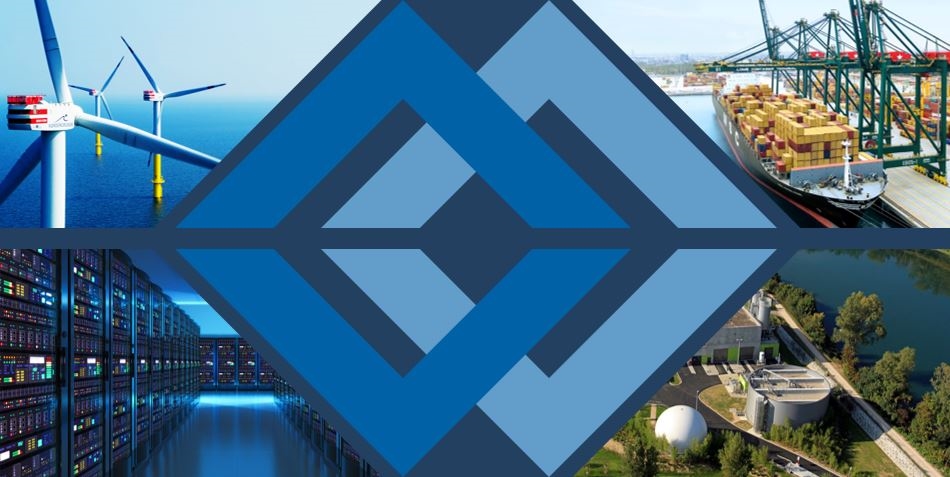Global Infrastructure Partners: Seizing the ESG opportunity
Formed from a marriage between Credit Suisse and GE in 2006, Global Infrastructure Partners (GIP) has long had a results-focused and data driven approach to EHS and ESG matters, by virtue of the team’s industrial GE heritage, explains Lucy Chadwick, Partner and Head of ESG.
“Given the kinds of infrastructure we manage, strong and comprehensive ESG is necessary to create the social licence we need to operate as GIP, and equally, the management teams that run our assets,” she says.

Chadwick herself is no stranger to the infrastructure sector, with 30 years’ experience in transport and government. She advises all of GIP’s Investment Committees, and sits on the boards of Italian high-speed train operator NTV Italo, Gatwick Airport in the UK, and Spanish natural gas and electricity utility Naturgy Energy Group, three GIP assets.
In response to the intensified focus on ESG and decarbonisation, GIP has “significantly expanded” its ESG team to eight executives and been vocal about the aspirations it has for its assets, she recounts.
“Fundamentally, given the sectors we invest in – investing and managing our assets through a decarbonisation lens is a key element of our strategy. We firmly believe that the attractiveness and value of our assets at exit will be increased if they have an ambitious decarbonisation plan and track record of delivering against it” she says.
Currently the vast majority of GIP’s portfolio companies have market benchmarked decarbonisation plans, and report publicly on their ESG performance. The fund manager also monitors well over 100 ESG performance indicators across its portfolio, and reports annually to its investors in a standalone ESG report, providing portfolio-level climate risk and net-zero alignment analysis, asset-by-asset data disclosures as well as case studies.

“When you look at energy, transport, water, waste and digital infrastructure, those markets have matured and new technologies such as carbon capture, energy and biofuels from waste, battery storage and hydrogen are coming onstream, yielding new commercial opportunities. We want to be at the forefront.”
Over a third of GIP’s investments across its flagship equity fund are in renewables. By contrast, this figure was 8% in GIP’s second fund, GIP II, and a respective 38% and 36% in GIP III and GIP IV.
“There is an unprecedented transition towards decarbonisation and that’s reflected in our most recent investments. We want to be ready as technologies mature, seizing opportunities early” says Chadwick.
ESG and returns go hand in hand
Across industries, investors and corporates face questions about whether prioritising ESG means sacrificing returns.
“We see our decarbonisation objectives as enhancing the value and marketability of our assets.”
Through its existing funds, GIP has recently acquired offshore wind farm developer Skyborn Renewables; through a consortium with Meridiam and Caisse de Dépôts, GIP acquired French utility Suez, and recently expanded that investment with the £2bn acquisition of Suez UK; GIP acquired CyrusOne in a partnership with KKR in a deal estimated to be worth up to USD 15bn; and it completed a USD 2bn acquisition of Atlas Renewable Energy.
For GIP, ESG is part of its long-term objectives to improve the credentials and exit value of its assets.
“We see the energy transition and ESG as value-creating and yielding entirely new opportunities for our businesses to seize upon,” says Chadwick.
GIP continues to invest in liquefied natural gas as a transition fuel, increasing supply and accelerating the decarbonisation of coal and oil-based energy sources to meet a limited carbon budget, with three recent investments completed in Australia in the last 18 months, including Pluto Train 2.
With regard to new hydrogen, carbon capture and storage, and energy from waste, GIP is “very interested” in standalone opportunities, says Chadwick.
But “given the scale of the investments we make, most of that is through our existing portfolio companies,” she points out.
For example, Naturgy in Spain and Scotia Gas Networks in the UK offer opportunities in hydrogen. Both, Chadwick explains, are trialling and supplying renewable gas such as hydrogen and biofuel into their gas distribution networks.
GIP has also gained exposure to carbon capture through its portfolio companies.
EnLink Midstream, for example, boasts 4,000 miles of pipeline infrastructure in Louisiana it is repurposing. The asset has signed agreements with ExxonMobil and hydrogen and nitrogen products manufacturer CF Industries to capture, transport and sequester carbon through its network.
“GIP’s aim is to invest in high quality infrastructure assets aligning to key thematic trends, including the energy transition and the ESG tailwinds, and utilising our hands-on active management and ESG approach to drive investment outcomes”
Request a Demo
Interested in IJGlobal? Request a demo to discuss a trial with a member of our team. Talk to the team to explore the value of our asset and transaction databases, our market-leading news, league tables and much more.

